In this blog I have often discussed some of the latest research in paleontology. Sometimes the discussion was about the discovery of a new species of dinosaur or trilobite. Or perhaps I discussed the latest understanding about the way those ancient animals lived, or in the case of mass extinctions died.
I freely confess however that I haven’t talked a great deal about the fossil evidence from ancient plants. So when a story about a 100 million year old flower encased in amber caught my eye, well you’re reading the result.

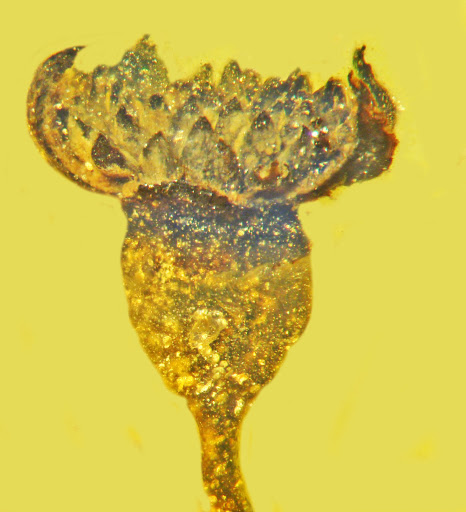
The chunk of amber in question came from that mine in Myanmar that has produced some very amazing fossils during the last 3-4 years from a period of time some 100 million years ago ; see my posts of 16Dec2016, 1Jun2019, and 2Aug2020. Part of the reason that this fossil flower is so important is that the evolution of flowering plants is thought to have begun only a few million years earlier and indeed many of the details of the flower point to its being rather primitive.
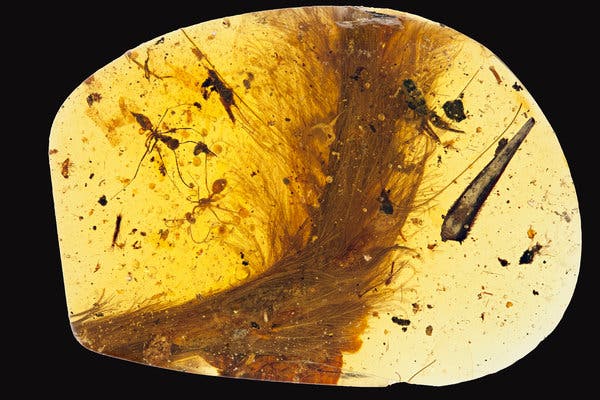
The flower had only male parts and comes from a new species, which has been given the name Valviloculus Pleristaminis. With a length of only 2mm, it is thought that the preserved specimen was probably one in a cluster of tiny flowers, something resembling a modern bluebell, with both male and female flowers.
Despite its small size the flower was preserved so perfectly that 50 individual stamens along with many other details can be easily discerned. The flower was described in a new paper by emeritus Professor George Poinar of Oregon State University who is a longtime expert on fossils in amber and whose work is considered to be part of the inspiration for the original novel “Jurassic Park”.
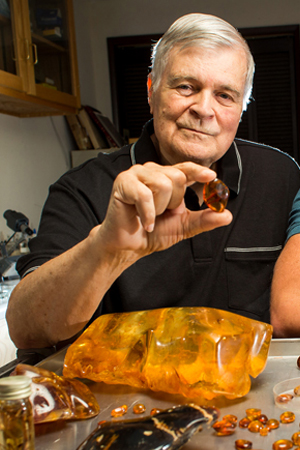
Paleontologists have many questions regarding the early evolution of flowering plants, technically known as angiosperms. It is hoped that this fossil flower, along with others from the same site, will provide new evidence to help answer some of those questions.
My second story for this month comes from almost the opposite end of the world, the land of my forebears, Ireland. Now Ireland is a small country and geologically the island is built on a bedrock of very old Paleozoic rock with a layer of much more recent glacial deposits on top. That means that while Ireland has a lot of fossils they are virtually all either more than 250 million years old, or less than about 20 million years old. In other words no dinosaur fossils!
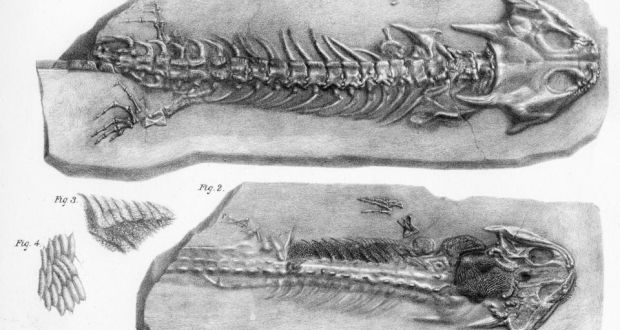
Now that doesn’t mean that Ireland never had any dinosaurs, it’s just that the evidence, the rocks that formed during the age of dinosaurs has been worn away by the Ice Ages of the last few million years. There could have been dinosaurs roaming around the Emerald Isle but without evidence we couldn’t be certain.
Until now, for the first reliably identified dinosaur bones have been discovered in county Antrim in Northern Ireland. The two bones were discovered by the late Roger Byrne, a schoolteacher and fossil collector who donated his collection to the Ulster Museum. Chemical analysis has determined that the two bones came from a small outcrop of Jurassic age rocks on the isle of Islandmagee along the east coast of County Antrim, dating the fossils to about 200 million years ago.

Mister Byrne believed that the two bones came from the same animal but an analysis of the fossils by a team from the University of Portsmouth and Queen’s University Belfast led by Dr. Mike Simms has concluded that they actually come from two very different species of dinosaur. One bone is a femur, heavy and dense that came from a four-legged plant eating armoured dinosaur similar to the ankyosaurus named Scelidosaurus. The other bone is lighter and much less dense and is part of the tibia from a two-legged meat eating theropod similar to the genus Sarcosaurus.
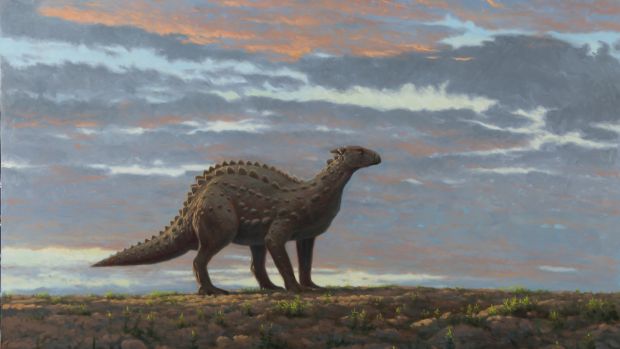

And the importance of these two fossils goes beyond simple national pride in being Ireland’s first dinosaurs because they also represent the most westerly dinosaur fossils ever discovered in Europe. On top of that there has been a growing theory that the armoured plant eater Scelidosaurus lived a life similar to that of marine iguanas today, eating algae along shallow seacoasts. The Jurassic rocks on Islandmagee are considered to have been laid down in just such an environment so the discovery of a Scelidosaurus there lends further evidence to that theory.

So there you are, two more discoveries from opposite sides of the world adding a few more details to our knowledge of the world of the dinosaurs. You can be sure that there are more discoveries to come and I will do my best to let you know about them.
